Old V2 Battery - alanbjohnston/CubeSatSim GitHub Wiki
Step 5: Battery Board
These instructions are to build and test the Battery board version v2.
Here is the PCB top and bottom:
Here is the schematic
Here is the board with the top on the left with the AMSAT logo and the bottom on the right:
You will need these tools:
- Safety glasses (to protect eyes while soldering or trimming leads)
- Soldering iron and solder (I use lead-free solder, but leaded solder is easier to work with)
- Liquid flux, either in a bottle or pen
Other tools that are helpful:
- Multimeter (to read battery voltage)
- Blue mounting putty(to hold components in place while soldering)
Checklist
The BOM has a sheet "By Steps" which lists the parts needed for each step in order. https://docs.google.com/spreadsheets/d/1Ta5UaJcinGozcheROrkfwXdGSDUZrXvQ1_nbIBdIIOY/edit?usp=sharing If you have a Google account, you can make a copy of this spreadsheet ("File" then "Make a Copy") and check off each part as you install it.
For example, here is the checklist of the through hole parts for this step:
Battery Board Instructions
Assembly
The Battery Board stacks on top of the Pi Zero and under the Main Board.
SMT Steps
Start by mounting U2, R1, and C1 SMT components.
Apply solder paste using the stencil, then mount the components with tweezers. Note the orientation of U2, with the pin one strip facing up.
Run the board through the Reflow Oven on Wave 2.
After it cools down, continue with the Through Hole Steps.
Through Hole Steps
You will need the following parts to make the Battery board as described in the BOM https://cubesatsim.org/bom:
- Battery PCB
- Stacking GPIO header J1
- Three Nickel Metal Hydride (NiMH) cells (AA size)
- Battery holders (AA size) BT1 and BT2
- INA219 blue voltage and current sensor board U1
- JST 2.0 jumper cable
- JST 2.0 connector JP1
- Two small zip ties
The parts are shown here:
On the top of the PCB, apply liquid flux to the six pads for the battery holders:
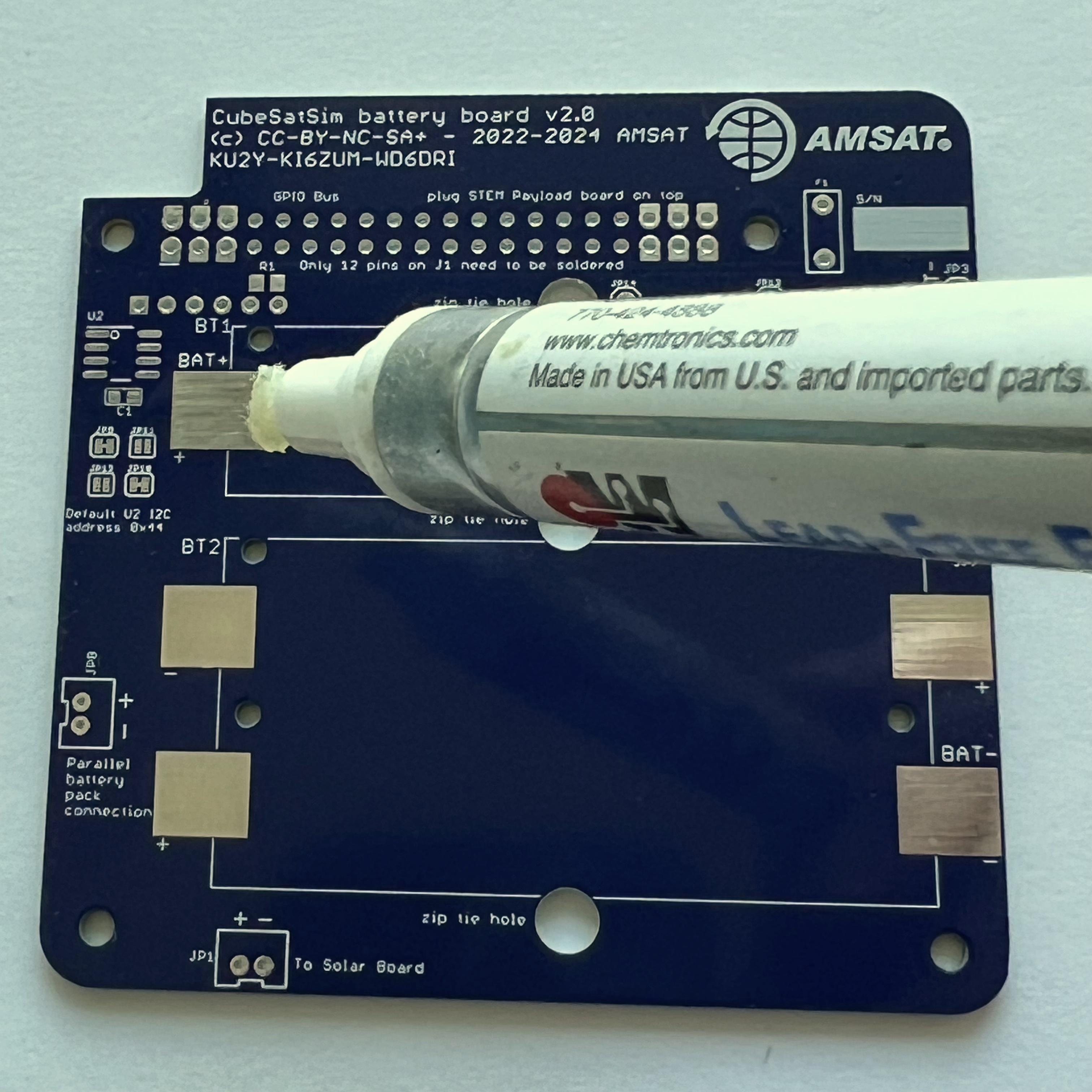
Then mount the battery holder BT1. There is a small tab on the bottom of the battery holders that fits in a hole in the PCB - make sure it is inserted so the battery polarity is correct and the holder is flat against the PCB. Apply more liquid flux on part:
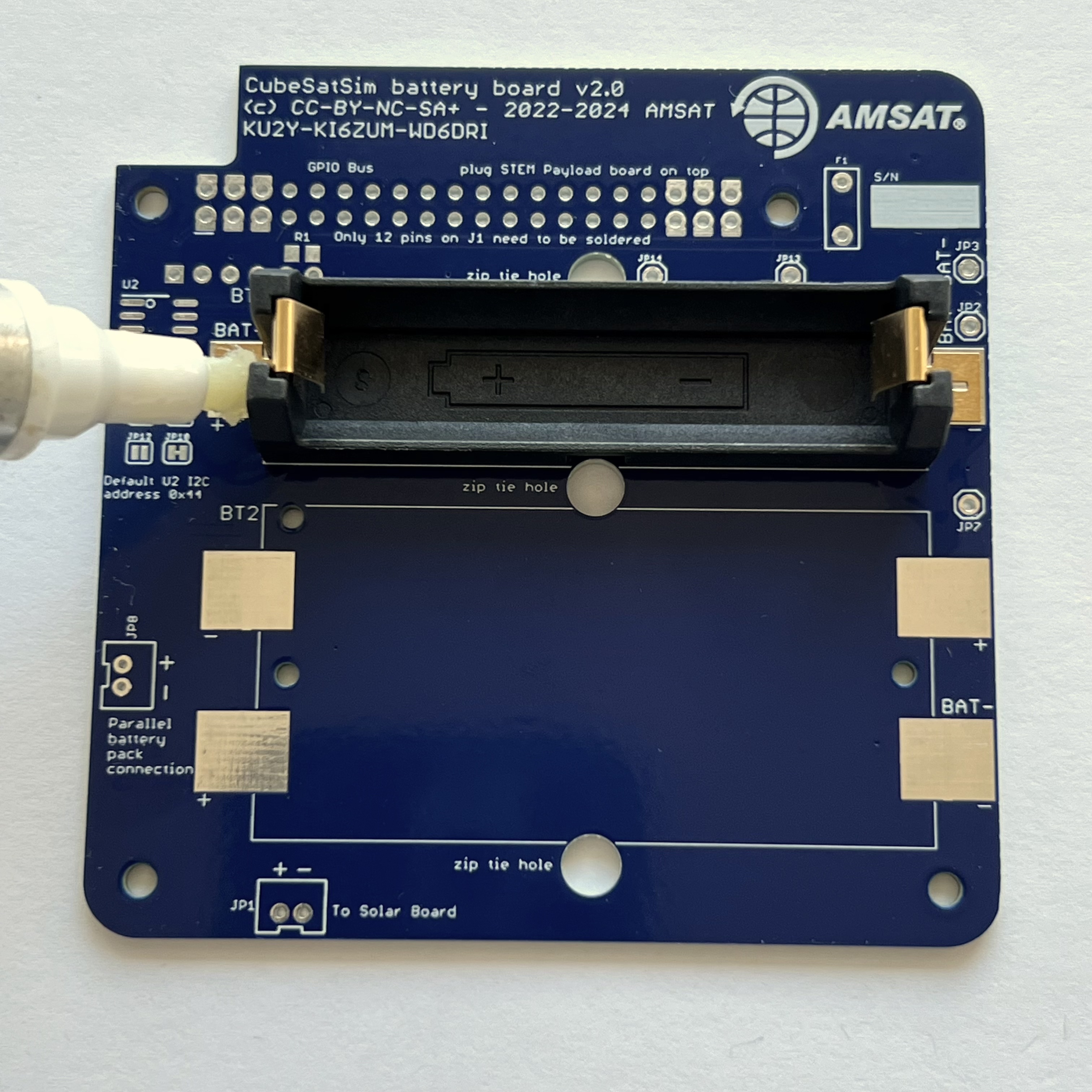
When soldering, make sure you apply some heat to the PCB, not just the part. This will ensure that the solder flows around and under the part
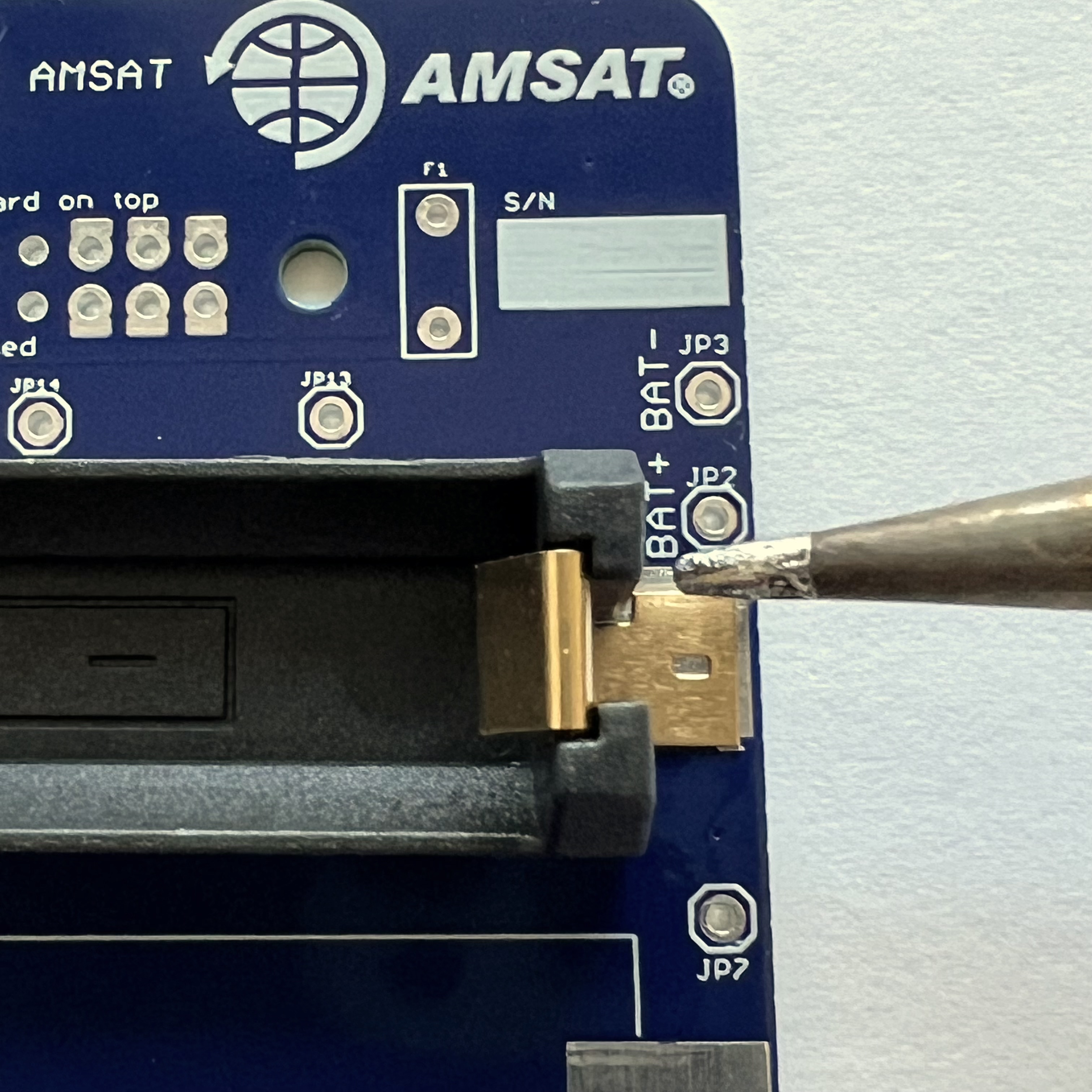
Here's how it looks when the pad is soldered:
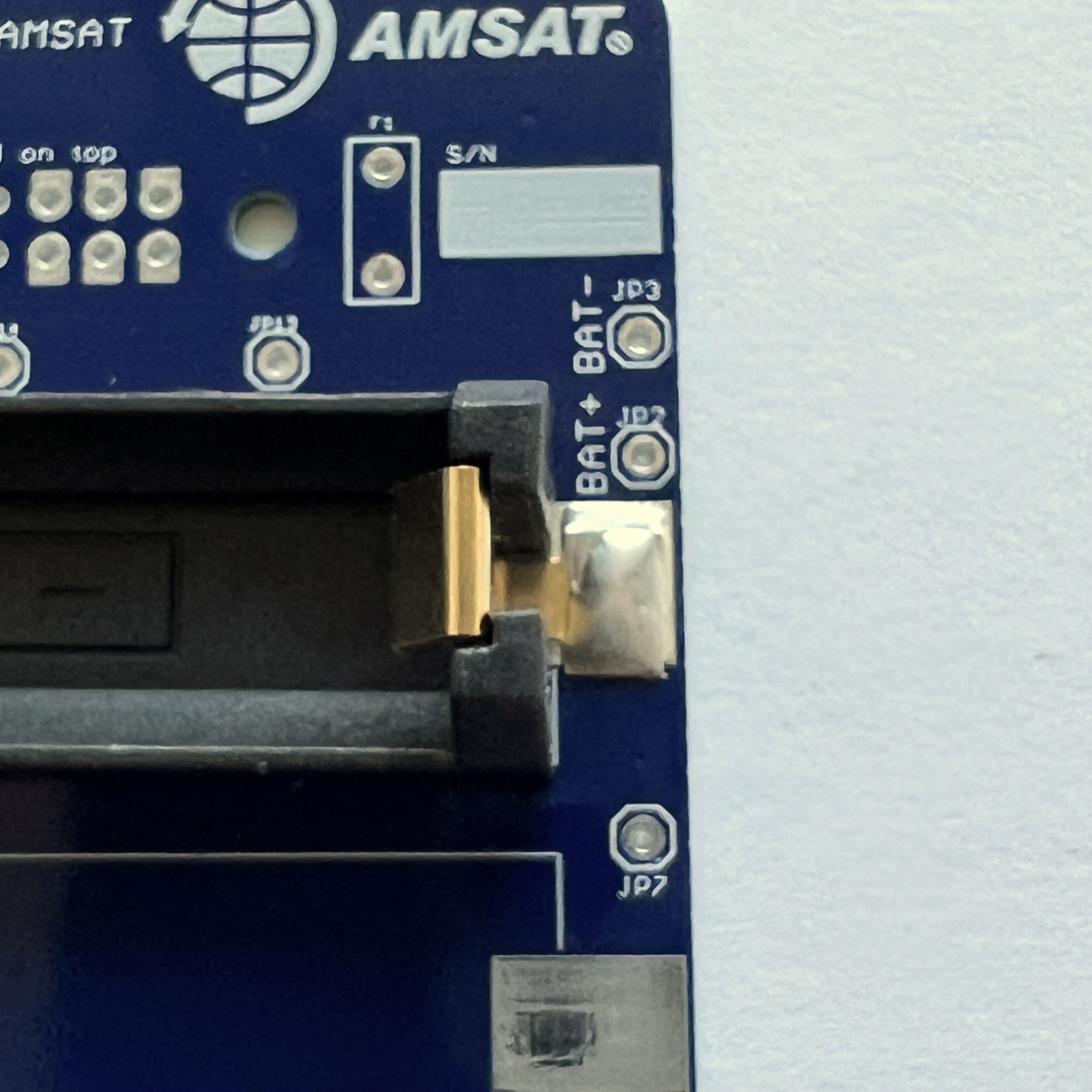
Solder the other pad (note this part is a little crooked):
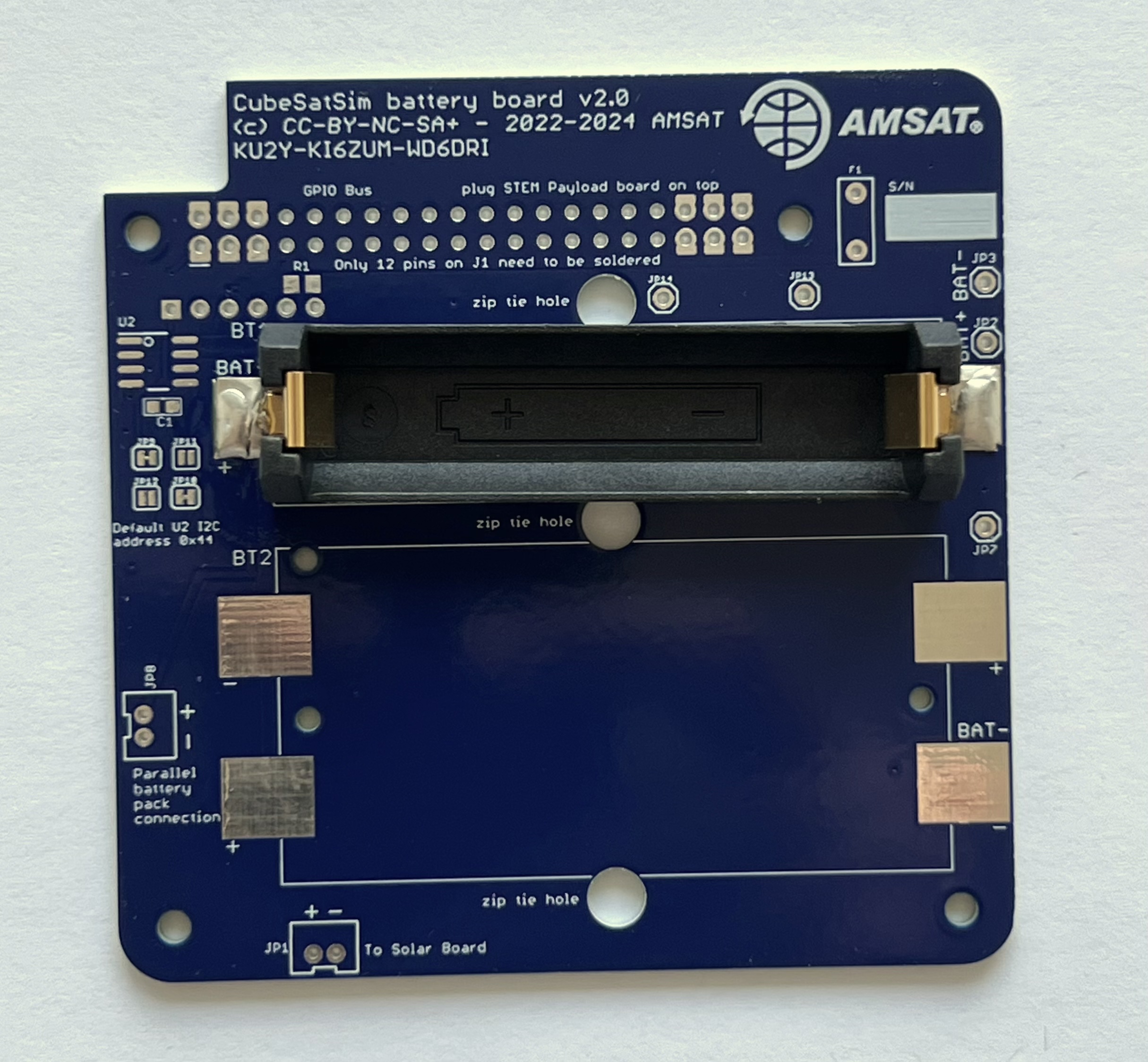
Then mount battery holder BT2:
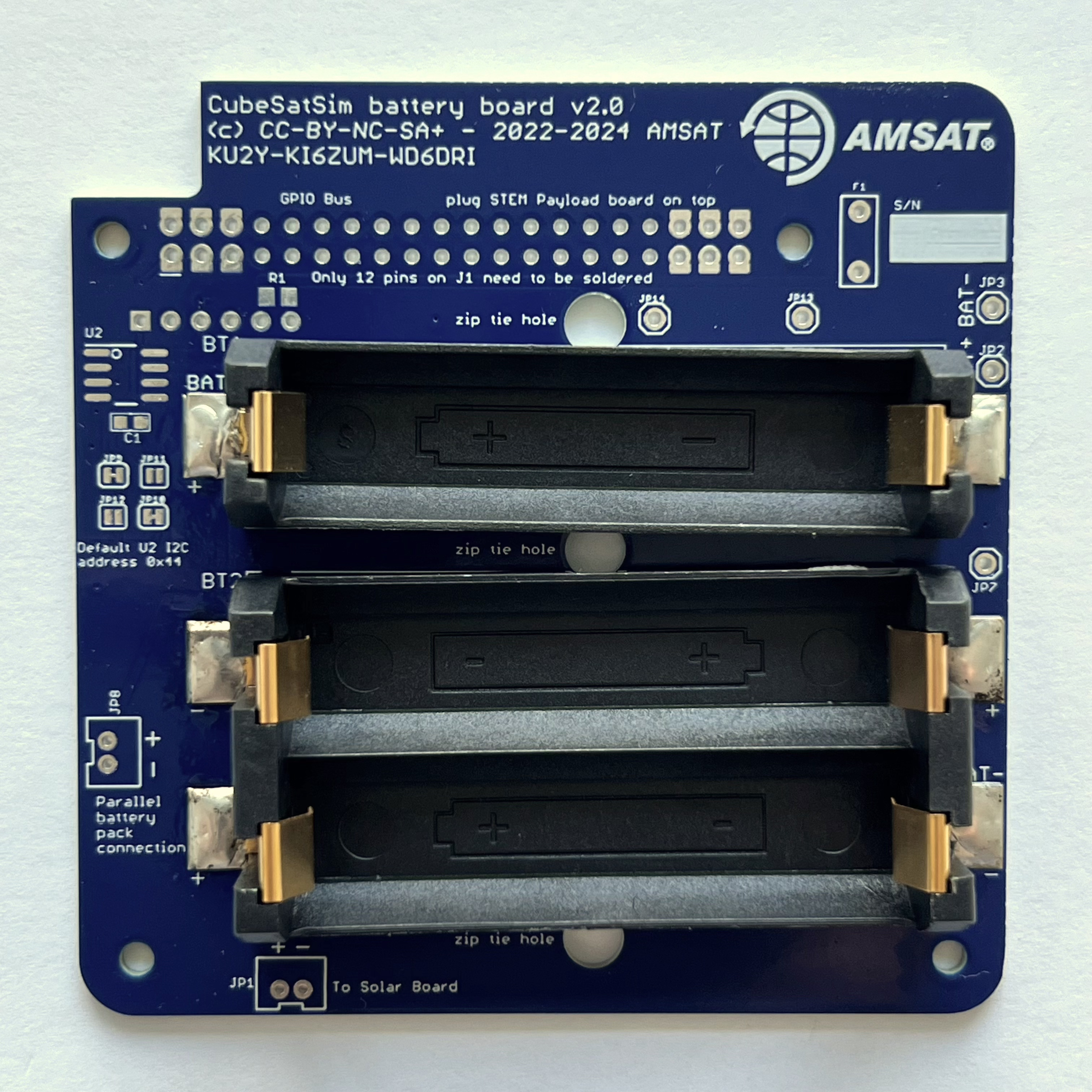
Here's how it looks with both battery holders soldered in:
Next, on the top of the PCB, insert the JST connector JP1.
Make sure the slot is facing the edge of the PCB and hold in place with blue putty:
Solder the pins on the other side.
The three NiMH batteries can be inserted and held in place with the clips or zip ties.
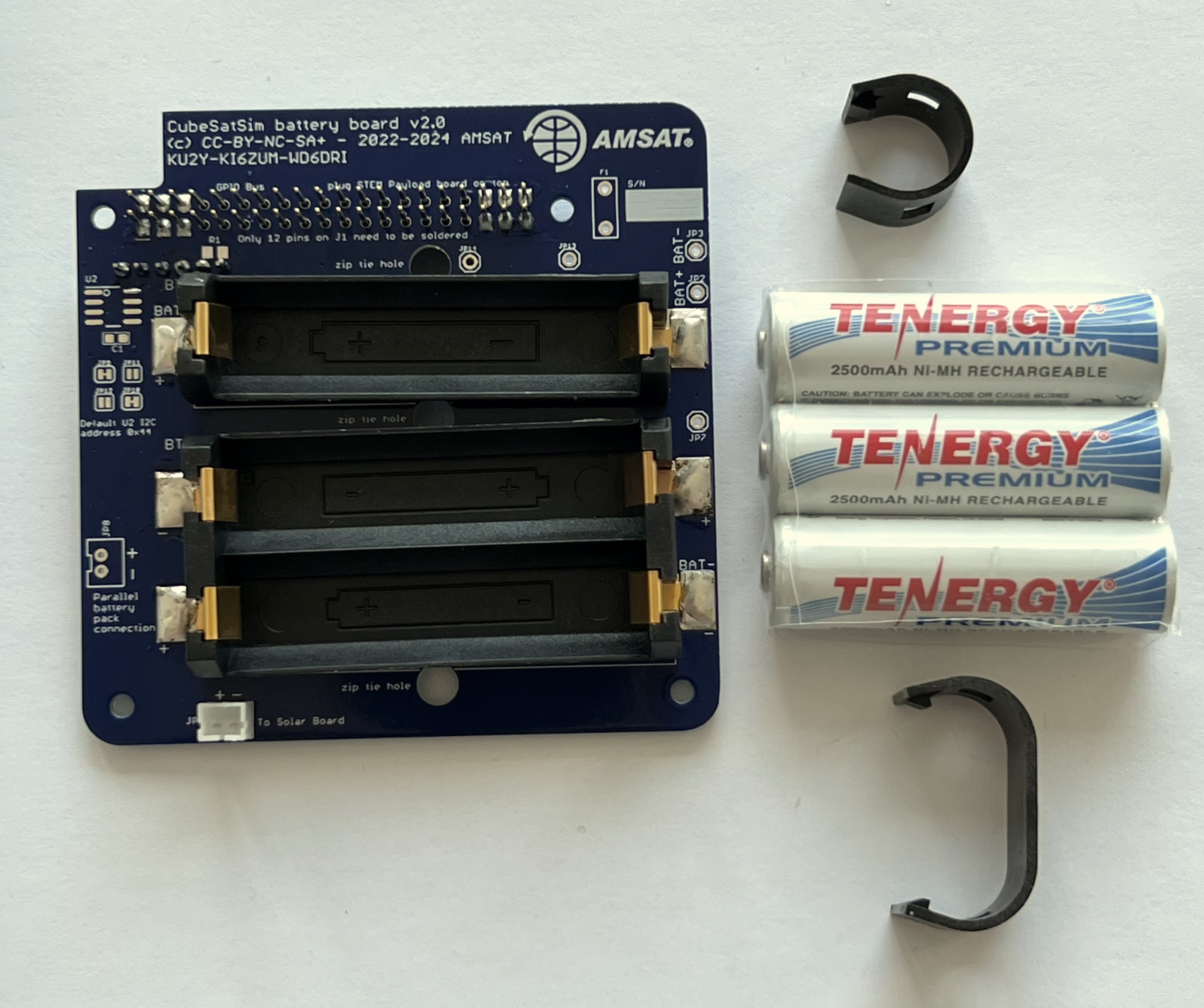
First plug in the batteries, paying attention to the polarity:
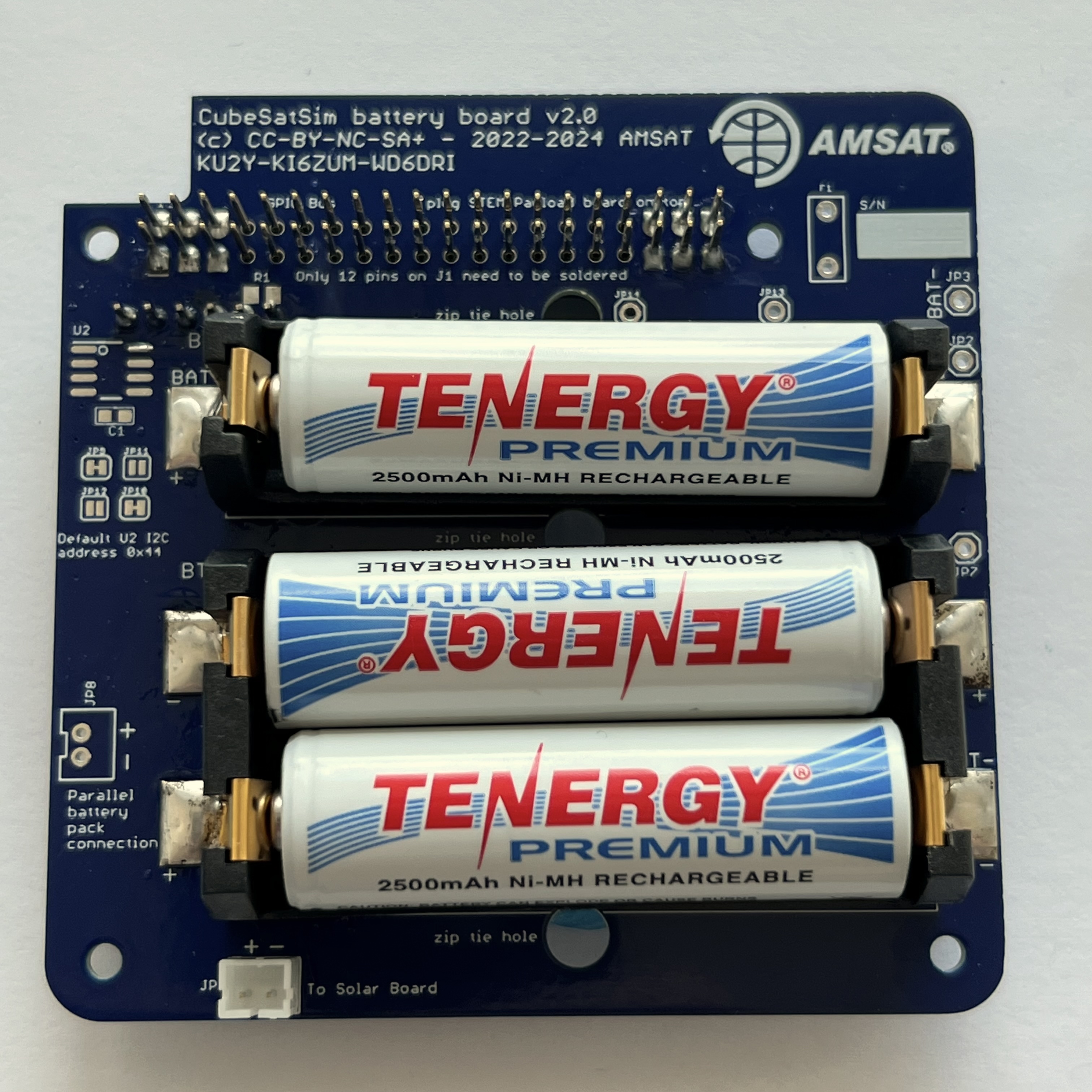
It is a good idea to test your battery polarity using a voltmeter. Use the BAT+ (J1) and BAT- (J2) test points on the board, being very careful not to short them together:
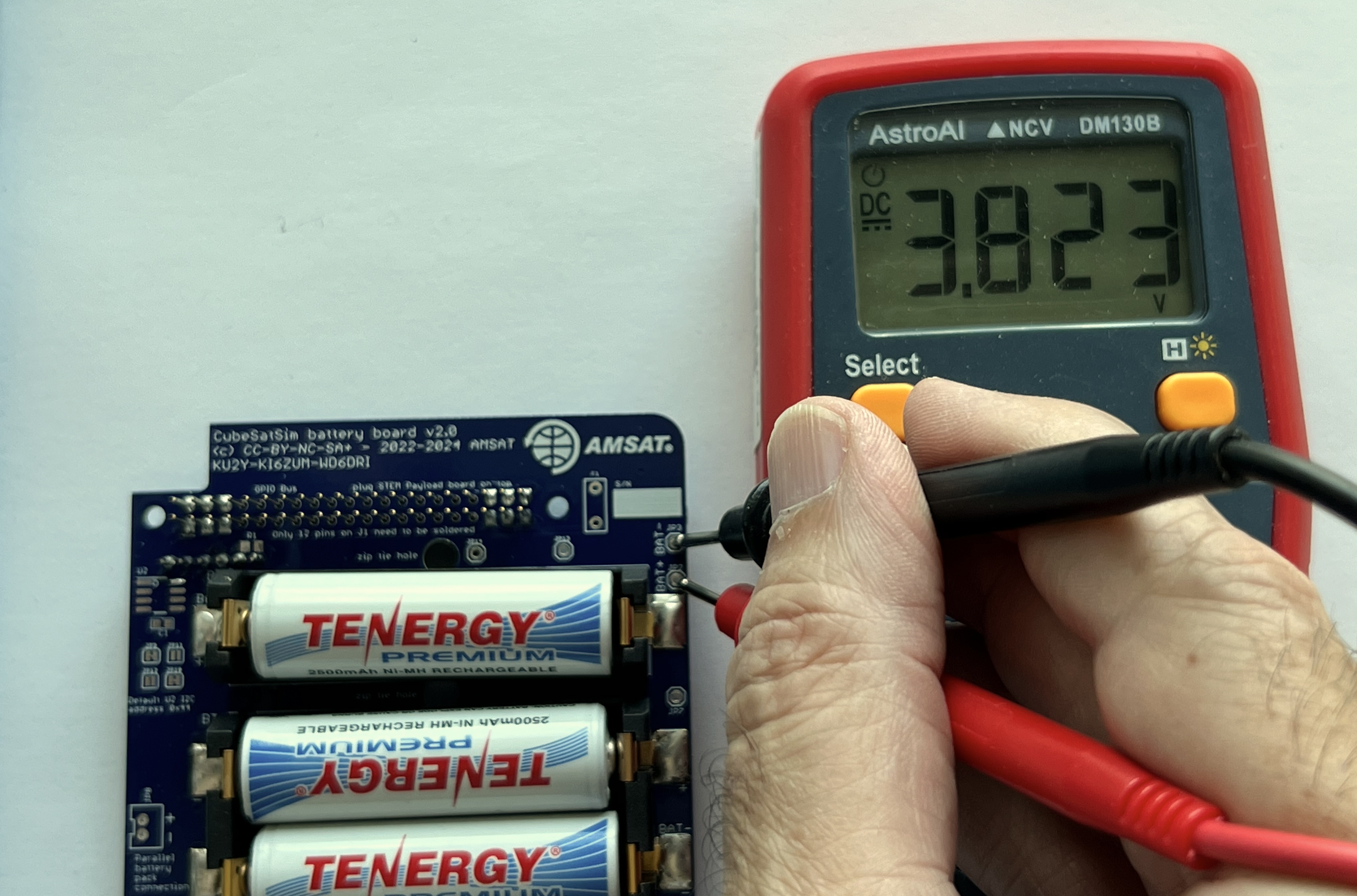
If you read a positive voltage in the range 3V - 4.5V, your Battery board is "nominal" and ready to be used. If you get a negative voltage, check that the red and black test leads are plugged into the positive and common inputs on your meter, or that your batteries aren't inserted backwards.
Secure the batteries with the clips. The clips need to be pushed down quite hard to get them to lock. This clip is not locked:
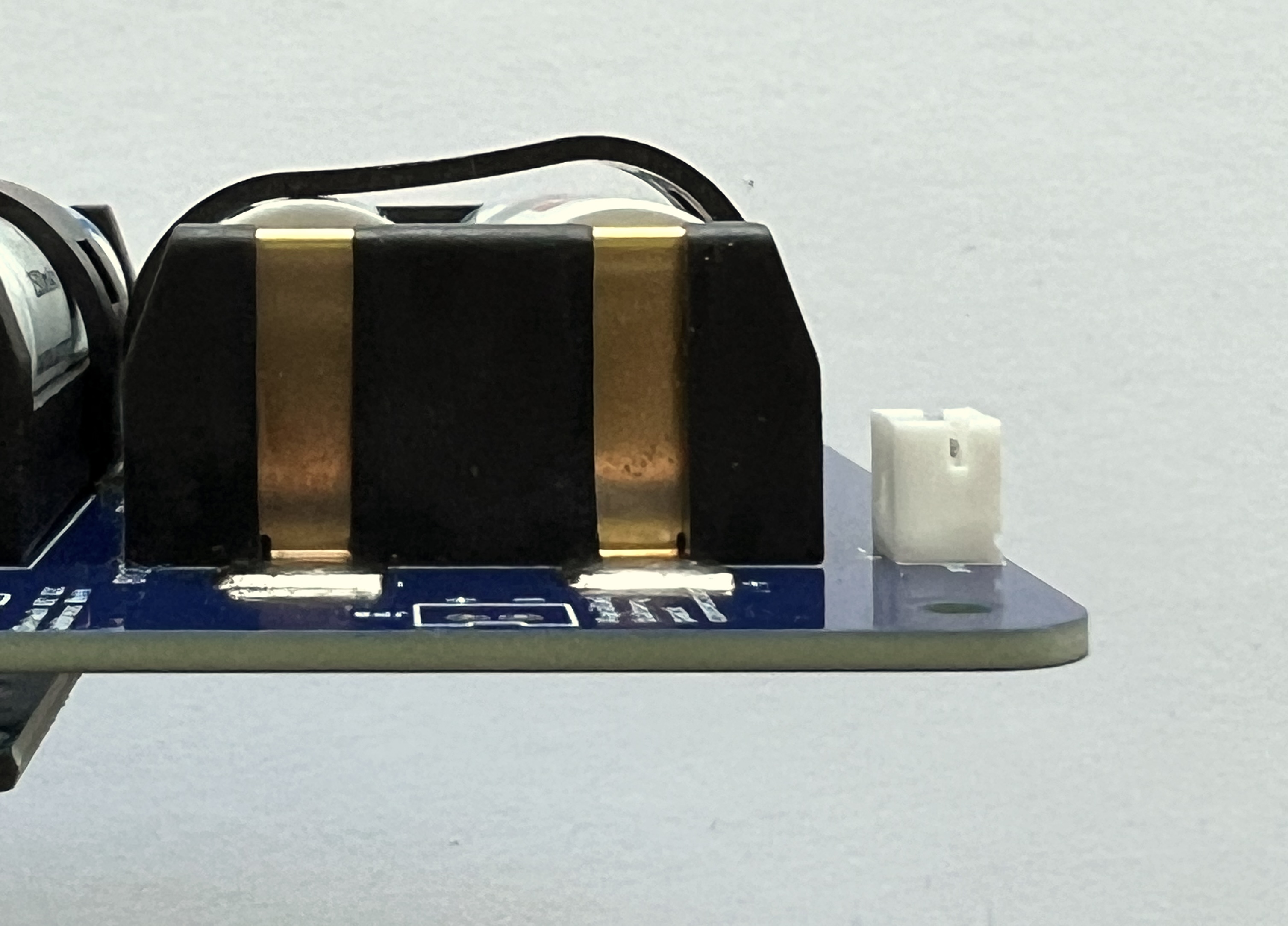
These clips are locked:
Here's how the completed board looks with the JST jumper wire connected to the JST connector:
The battery board is complete and ready for Flat Sat Testing.